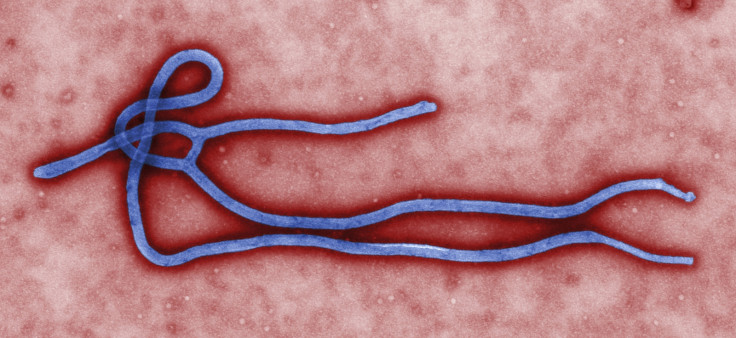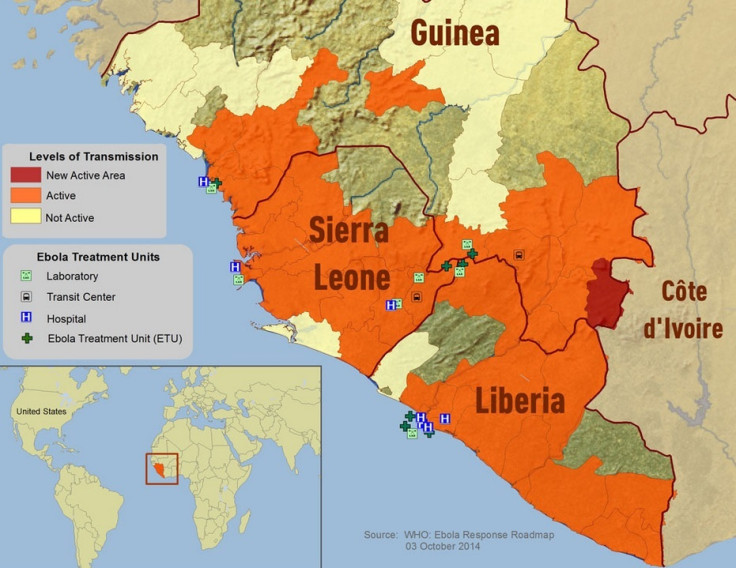Ebola Outbreak: Facts About the Deadly Virus

The 2014 Ebola epidemic in West Africa is the largest in history and has killed more than 3,400 people. Despite assurances from public health officials that it is not an airborne disease, fears are mounting as experts on the ground warn the outbreak is "out of control" and as imported cases hit Europe and the US.
What is Ebola?
Ebola, previously known as Ebola hemorrhagic fever, is a rare and deadly disease, which has various strains - the Ebola Zaire is known as the most dangerous.

The virus was first discovered in 1976 from outbreaks in southern Sudan and in northern Zaire, now known as Democratic Republic of the Congo. It was named "Ebola" after a small river in north-western DRC.
The third African strain, named Côte d'Ivoire Ebola, was discovered in 1994. According to the US National Library of Medicine, it was isolated from an infected ethnologist who had worked in the Tai Forest reserve and had done a necropsy (post-mortem examination) on a chimpanzee. The fourth strain is known as the Bundibugyo Ebola virus.
A fifth strain is called Reston Ebola, which is found in the Philippines. It was first described in 1989 and isolated from Cynomolgus monkeys and tested at a quarantine facility in Reston, Virginia, US.
However, in the Emerging Infectious Disease journal, it claims the first outbreak of the disease occurred around 430BC in ancient Greece.
What is the cause of Ebola?
The cause of the virus has never been identified and it is still not known how the first case jumped to humans. But researchers believe that the virus is animal-borne and that fruit bats are the most likely reservoir or host of the disease.
What is the fatality rate?
Depending on the strain, the mortality rate can reach 90%.
What are the symptoms?
The flu-like symptoms on average take eight to 10 days to appear after exposure to Ebola. They usually include high fever greater than 38.6C, severe headaches, muscle pain, weakness, diarrhoea, vomiting, abdominal pain and unexplained bleeding that can appear from the eyes, nose, gums and even under the skin.
Recovery depends on good healthcare systems and the patient's immune response. Those who recover from Ebola infection develop antibodies that last for at least 10 years.
How is it transmitted?
Public health officials said it can only be transferred via blood or other bodily fluids but previous research published in the journal, Scientific Reports, proved it could be transmitted by air between species. Scientists in Canada proved pigs infected with Ebola Zaire could pass it on to monkeys without any direct contact with each other.
Dr Gary Kobinger from the National Microbiology Laboratory at the Public Health Agency of Canada told the BBC at the time of its investigation in 2012: "We saw a lot of evidence in the lungs of the non-human primates that the virus got in that way."
Also, Tom Frieden, director of the Centers of Disease Control and Prevention, earlier this year said it was not impossible for the virus to become airborne.
Can it be prevented?
Currently there is no vaccine but the use of ZMapp drug has been attributed to saving lives but it is still subject to clinical trials to establish its safety.

Number of Ebola Cases
In West Africa, 3,440 people out of 7,492 cases have died from Ebola. Meanwhile, 2,069 deaths have been in Liberia, 739 in Guinea, 623 in Sierra Leone, eight in Nigeria and one in the US.
Centers for Disease Control and Prevention, America's prestigious public health institute, is predicting the number of cases to reach 1.4 million by January.
First Incidence of Ebola in US in 1989
In 1989 dozens of macaque, which were imported from the Philippines to the Hazelton Research Products' Reston Quarantine Unit, began dying with Ebola symptoms.
Four workers were exposed and tested positive to the virus. At first it was believed it was the Zaire strain but it was later labelled Ebola Reston. Miraculously, the virus strain only killed the primates.
The ventilation system was being blamed as the source of spread. "Due to the spread of infection to animals in all parts of the quarantine facility, it is likely that Ebola Reston may have been spread by airborne transmission," wrote Lisa A Beltz, assistant professor, from Kent State University, Ohio, in her book Emerging Infectious Diseases.
US Ebola Patent
The CDC claims to own a patent of the EboBun strain of Ebola following an outbreak of hemorrhagic fever in Uganda. Its patent number is CA2741523A1 and was awarded in 2010. The patent reveals the US government has sequenced the virus's DNA and claims ownership of any strain which is 70% similar.
© Copyright IBTimes 2024. All rights reserved.






